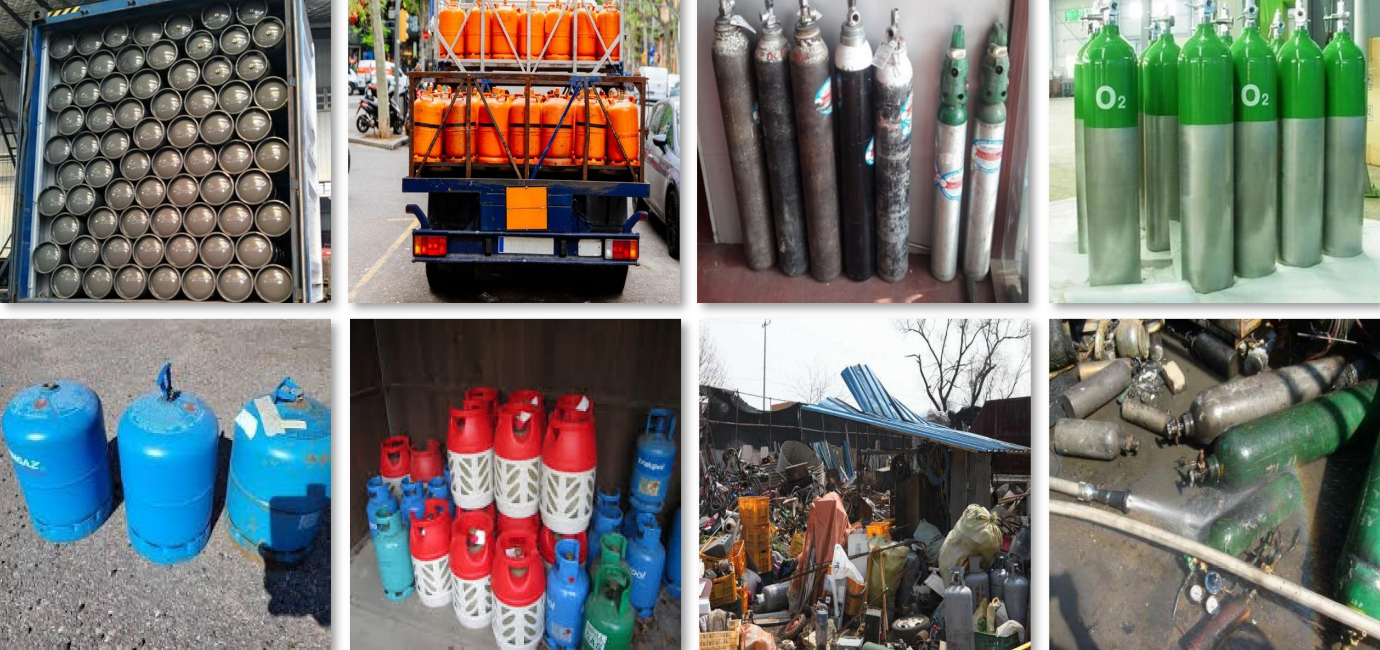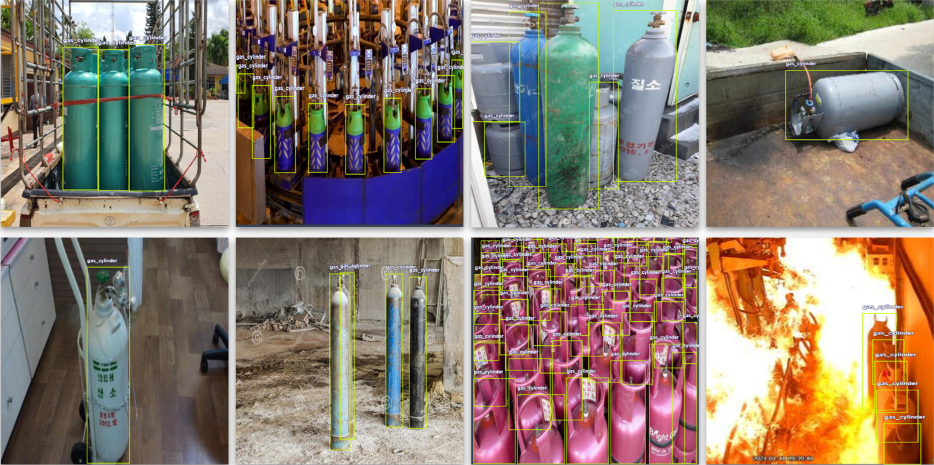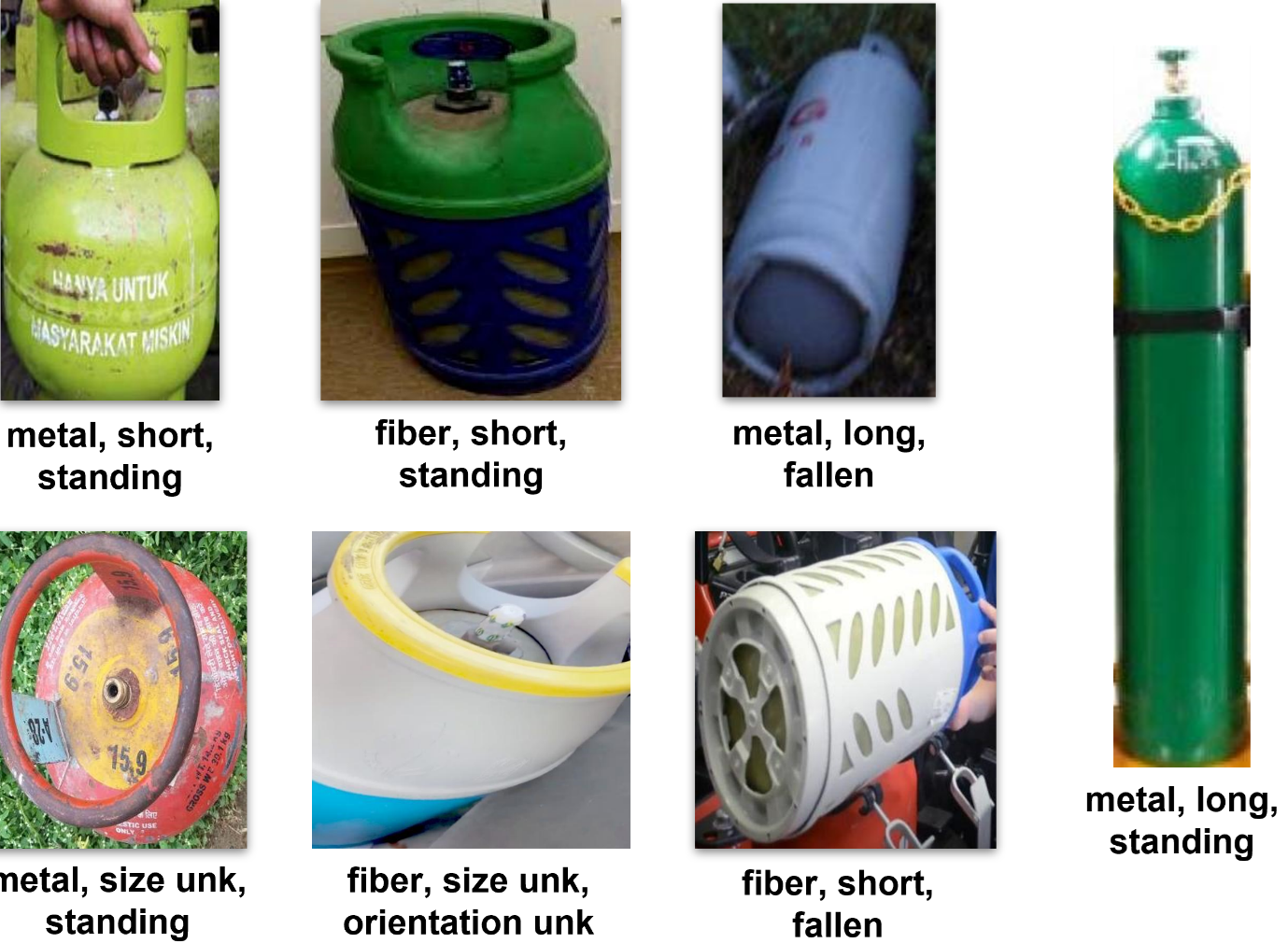CylinDeRS: Cylinder Detection in Real-world Scenes
Overview
Gas cylinder detection and identifying their characteristics hold considerable potential for enhancing safety and operational efficiency in several applications, including industrial and warehouse operations. These tasks gain significance with the growth of online trade, emerging as critical instruments to combat environmental crimes associated with hazardous substances’ illegal commerce. Our work aims to support research with the curation of CylinDeRS, a comprehensive dataset of 7060 images, with a total of 25,269 gas cylinder object instances, explicitly designed for gas cylinder detection and the classification of their key attributes (material, size, and orientation) in real-world scenes.

Methodology
The proposed methodology for creating the CylinDeRS dataset is illustrated in the figure below. In the first step, candidate sources for the data acquisition process are identified. Each source undergoes exploration to identify relevant data (images and potentially available ground truth labels). In the next step, duplicate image data are removed using an image hashing algorithm, followed by manual review and removal processes, generating an updated image collection. The annotation process follows, involving meticulous curation through manual review, refinement of existing annotations, and addition of new annotations. Finally, the data are anonymized (by blurring identifiable faces) to address any privacy risks, resulting in the final list of images and ground truth annotations. This comprehensive process ensures the consistency and reliability of both image and annotation data, consequently promoting reproducibility and facilitating in-depth explorations and analyses of the dataset.

Dataset
The result of the aforementioned steps is an extensive collection of 7060 images, each featuring a variable number of gas cylinder objects. In particular, CylinDeRS contains a total of 25,269 instances of gas cylinders, with an average of 3.6 instances per image. The following figure illustrates indicative samples of gas cylinders.

The table below details the distribution of images and gas cylinder instances as established after the annotation process, ensuring a fair distribution of both the number of images and instances among training, validation, and test sets. The table also includes the average number of gas cylinders per image for each set. Notably, following a 70:20:10 split ratio, the dataset comprises 4915 training images, 1434 validation images, and 711 test images, with 18,137 instances in the training, 4862 in the validation, and 2270 gas cylinders in the test set.

The following figure illustrates indicative samples of gas cylinders regarding the different attribute categories -material, size, orientation- for each of 25,269 instances.

Additional details regarding the dataset curation process as well as our experimental results and conclusions cab be found in our research paper “CylinDeRS: A Benchmark Visual Dataset for Robust Gas Cylinder Detection and Attribute Classification in Real-World Scenes”, which was published in the MDPI Sensors.
Dataset and Models
The CylinDeRS dataset is publicly available from the Roboflow repository.
Download models here
Citation
If you find our work useful in your research, please cite both our paper and the dataset repository:
K. Stavrothanasopoulos, K. Gkountakos, K. Ioannidis, T. Tsikrika, S. Vrochidis, I. Kompatsiaris, “CylinDeRS: A Benchmark Visual Dataset for Robust Gas Cylinder Detection and Attribute Classification in Real-World Scenes”, Sensors, 25(4), 1016, 2025 https://doi.org/10.3390/s25041016
License
The dataset is licensed under CC BY 4.0.
Contact
Konstantinos Gkountakos: gountakos@iti.gr
Konstantinos Ioannidis: kioannid@iti.gr
Theodora Tsikrika: theodora.tsikrika@iti.gr

